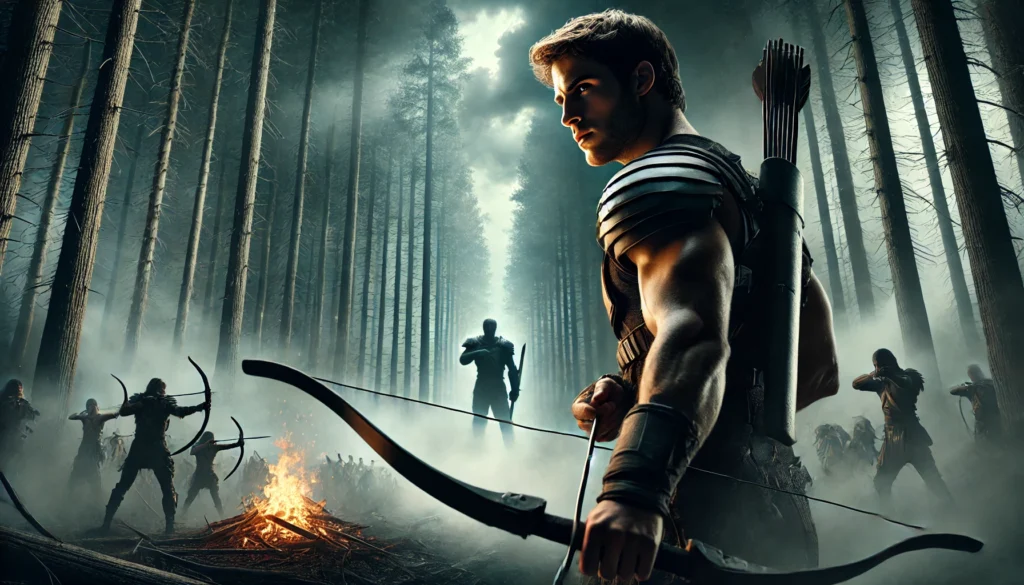In Suzanne Collins’ dystopian novel series, “The Hunger Games,” Cato emerges as one of the most compelling and ruthlessly skilled antagonists. A tribute from District 2, known for its prowess in combat and military tactics, Cato represents the harsh realities of a society divided by wealth and power. This article delves into the character of Cato Hunger Games, exploring his role, significance, and the complex nature of his villainy against the backdrop of Panem’s brutal arena.
Table of Contents
ToggleIntroduction to Cato: The Face of District 2’s Brutality
Cato Hunger Games, as a central antagonist in the first book of “The Hunger Games” trilogy, is not just a simple villain; he is a product of his environment. Born and raised in District 2, a district allied closely with the Capitol and known for training Careers (tributes who train their entire lives for the Games), Cato embodies the peak physical and mental conditioning that the Games demand. His upbringing instills in him not only a fierce competitiveness but also a certain degree of pride and honor in his role as a Career tribute.
Cato’s Role in The Hunger Games
Throughout “The Hunger Games,” Cato’s presence serves as a constant threat to the protagonist, Katniss Everdeen, and her allies. His skills in hand-to-hand combat, strategy, and survival make him a formidable opponent. However, his character is also a narrative device used by Collins to expose the corrupt, violent, and manipulative nature of the Capitol, which turns children into monsters for entertainment.
The Psychological Complexity of Cato
Cato’s portrayal goes beyond that of a typical villain. His final moments during the climax of the Games reveal a depth of desperation and realization that resonates with the audience. His plea, filled with agony and frustration, underscores the tragic reality of the Games: even the strongest and most prepared are ultimately victims of the Capitol’s cruel game. This moment adds layers to Cato’s character, presenting him not just as a villain, but as a victim of a larger system.
Impact and Legacy of Cato Hunger Games
Cato’s impact on the series and its audience is profound. He epitomizes the cruelty and horror of the Hunger Games themselves. As a character, Cato Hunger Games challenges readers to consider the effects of an oppressive regime on its youth and the moral implications of a society that glorifies violence for sport. His legacy is a testament to the power of well-crafted antagonists who reflect the darker aspects of society.
Comparative Analysis with Other Dystopian Villains
Comparing Cato Hunger Games to other dystopian villains highlights his unique role as both a symbol of the Capitol’s power and a product of its environment. Unlike the cold, calculated villainy of characters like President Snow, Cato’s aggression and ferocity are more a result of nurture than nature. This comparison allows readers to explore themes of morality, free will, and the impact of environment on behavior.
The Role of Villains in Advancing Dystopian Narratives
Villains like Cato are essential in dystopian literature, as they personify the oppressive structures against which the protagonists rebel. Through Cato, “The Hunger Games” not only advances its plot but also deepens its exploration of themes such as survival, humanity, and resistance. His character forces both characters and readers to confront uncomfortable truths about power, violence, and the human capacity for both.
Conclusion: Cato Hunger Games
Cato Hunger Games is a character that embodies the complexities of villainy in a dystopian setting. His development from a feared competitor to a poignant symbol of the Capitol’s cruelty provides critical insight into the psychological and moral dimensions of Collins’ fictional world. By examining characters like Cato, readers gain a deeper understanding of the impact of dystopian societies on individuals and the enduring human struggle for dignity and freedom in the face of overwhelming odds.

